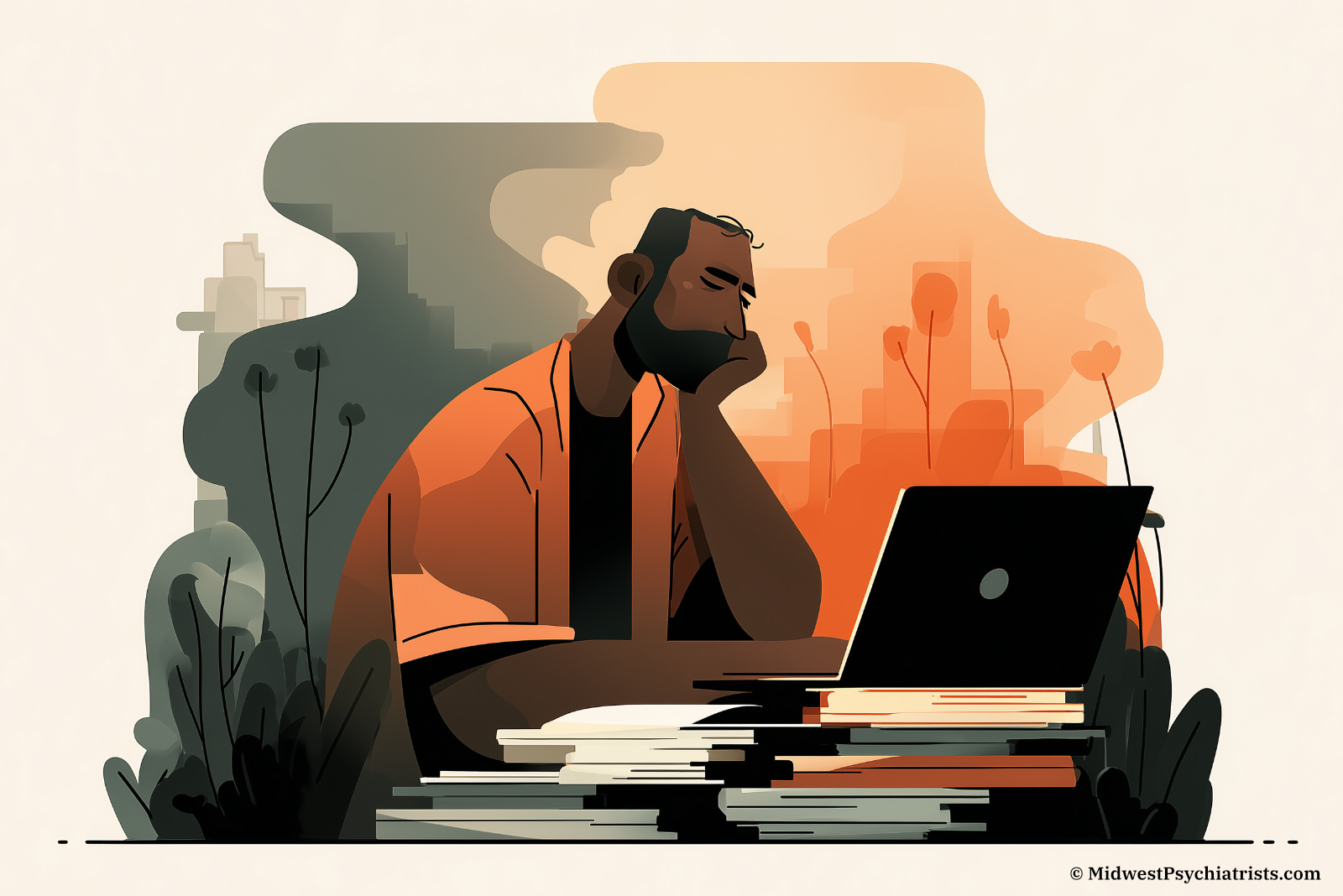Understanding Stress, Burnout, and Mental Health Through a Readiness Model
As a psychiatrist, I often hear this question from patients, colleagues, and friends: “Do I have depression, or am I just burned out?” It’s a valid and increasingly common concern in today’s high-pressure, always-on world. The answer isn’t always simple—but a helpful framework I often use comes from the stress continuum model: Ready – Reacting – Injured – Ill.
This model helps us understand mental well-being as a spectrum rather than a black-and-white diagnosis. It’s not just about whether you meet criteria for a mental illness. It's about recognizing where you are now and how to move toward wellness.
Ready (Green): Thriving and Resilient
When you're in the Ready zone, you're at your best. You’re functioning well physically, mentally, and spiritually. You’re prepared, focused, and motivated. There’s a sense of calm, ethical grounding, and even enjoyment in what you’re doing. You feel like yourself.
This is the zone we strive for—not because it’s realistic to be here all the time, but because it sets the bar for optimal functioning. If you’re here, keep doing what works: maintain healthy habits, foster connection, get good sleep, and don’t ignore early signs of strain.
Reacting (Yellow): The Warning Signs of Burnout
In the Reacting zone, you’re starting to feel off, but it’s usually mild and temporary. Maybe you’re more irritable, anxious, or sad. You might have trouble sleeping or concentrating. You notice tension in your body or a sense that things aren’t as enjoyable as they used to be.
This is burnout territory—a warning light on the dashboard. Burnout is not a clinical diagnosis, but it’s a real, cumulative condition. Often caused by chronic workplace stress or emotional fatigue, burnout is a signal that something in your environment—or your response to it—needs to change.
The good news is: yellow can return to green. With rest, support, and some reflection, most people in this stage recover without long-term issues.
Injured (Orange): Deeper Wounds
In the Injured zone, distress becomes more persistent. You might feel intense sadness, guilt, shame, or a diminished sense of purpose. You no longer feel like yourself. This may involve panic, rage, substance use, or emotional numbness.
This is where we begin to move beyond burnout. The effects of stress—whether from a job, a traumatic event, or prolonged exhaustion—begin to scar. The risk of developing a full-blown mental illness increases.
This zone often gets overlooked. Many people keep pushing through, thinking “I’m just tired” or “It’ll pass.” But when the orange zone drags on, people start to lose hope. This is the time to seek help—talk to a therapist, a primary care doctor, or a mental health professional. You don’t have to wait until things are “bad enough.”
Ill (Red): Clinical Depression and Beyond
The Ill zone represents a clinical mental illness—like major depressive disorder, generalized anxiety disorder, or PTSD. Symptoms are severe, ongoing, and significantly impair your ability to function. You may feel hopeless, unable to work or connect with others, or struggle with thoughts of self-harm.
This zone is not a moral failing or a weakness. It’s a real medical condition—and it’s treatable. With therapy, medication, lifestyle changes, and support, people can and do get better. But without help, symptoms tend to worsen.
So… Do I Have Depression or Burnout?
Ask yourself:
- Are these feelings new, or have they been going on for months?
- Can I still experience joy, or does everything feel flat?
- Do I feel like myself, or like someone I don’t recognize?
- Is rest helping, or does nothing seem to work?
If you’re in the yellow zone, focus on rest, boundaries, and self-care. If you’re in the orange or red zones, please don’t go it alone—help is available, and it works.
Final Thoughts
Mental health isn’t binary. We all move along this continuum at different points in our lives. Understanding where you are right now is the first step toward healing. Whether you’re thriving, burning out, or struggling, there’s always a path forward.
If you're unsure what zone you're in or what to do next, talk to a professional. You don’t have to wait until you’re in crisis to take your mental health seriously.

